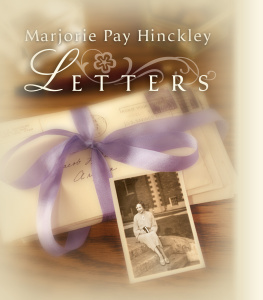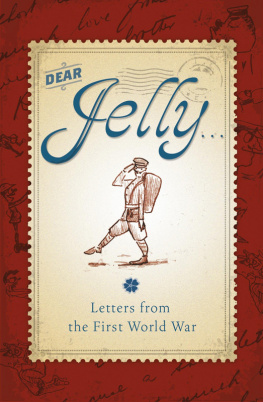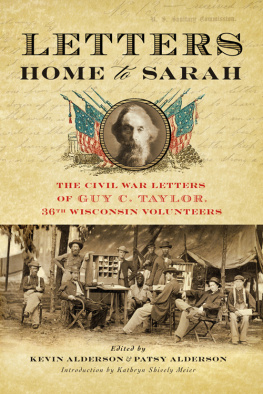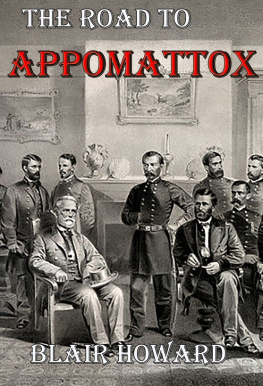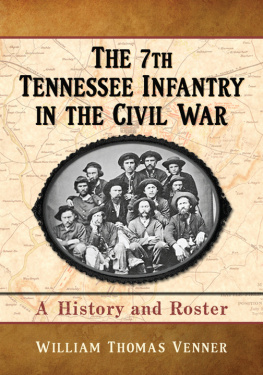


Copyright 2013 by Syracuse University Press
Syracuse, New York 13244-5290
All Rights Reserved
First Edition 2013
13 14 15 16 17 18 6 5 4 3 2 1
The paper used in this publication meets the minimum requirements of the American National Standard for Information SciencesPermanence of Paper for Printed Library Materials, ANSI Z39.48-1992.
For a listing of books published and distributed by Syracuse University Press, visit our website at SyracuseUniversityPress.syr.edu.
ISBN: 978-0-8156-1011-3
Library of Congress Cataloging-in-Publication Data
Dunham, Valgene L., 1940
Allegany to Appomattox : the life and letters of Private William Whitlock of the 188th New York Volunteers / Valgene Dunham ; foreword by Bill Potter. First edition.
pages cm
Includes bibliographical references and index.
ISBN 978-0-8156-1011-3 (cloth : alk. paper) 1. Whitlock, William, 18291865Correspondence. 2. United States. Army. New York Infantry Regiment, 188th (18641865) 3. New YorkHistoryCivil War, 18611865Regimental histories. 4. United StatesHistoryCivil War, 18611865Personal narratives. 5. SoldiersNew York (State)Correspondence. 6. Appomattox Campaign, 1865. 7. VirginiaHistoryCivil War, 18611865Campaigns. 8. Allegany (N.Y.)Biography. 9. Whitlock family. I. Title.
E523.5188th .D86 2013
973.7'38dc23 2012050460
Manufactured in the United States of America
To Betty Anne, who helped navigate
the back roads of Virginia and fifty years of life,
and to Howard Mark Whitney, the family Collector
People will not look forward to posterity, who never look backward to their ancestors.
EDMUND BURKE, On the Causes of the Present Discontents
I can never turn their tiny leaves, or even take one in my hand, without the actual army sights and hot emotions of the time rushing like a river in full tide through me. Each line, each scrawl, each memorandum, has its history. Some pang of anguishsome tragedy, profounder than ever poet wrote. Out of them arise active and breathing forms. They summon up, even in this silent and vacant room as I write, not only the sinewy regiments and brigades, marching or in camp, but the countless phantoms of those who fell and were hastily buried by wholesale in the battle-pits, or whose dust and bones have been since removed to the National Cemeteries of the land, especially through Virginia and Tennessee.
WALT WHITMAN, Memoranda, &c.
War is the sum total of its individual stories, from comedy to romance to drama to tragedy.
JOSEPH T. GLATTHAAR, General Lees Army
VALGENE DUNHAM is a native of Jamestown, New York, was raised in Cherry Creek and Westfield, New York, and finished grades 1 through 12 in Lorain, Ohio. Following a degree from Houghton College, Houghton, New York, and graduate degrees from Syracuse University, he pursued a career in plant biochemistry with research/teaching positions at Purdue University, State University of New York at Fredonia, and Western Kentucky University. After a tenure of thirteen years in administrative positions at Coastal Carolina University, Dr. Dunham retired and currently holds the position of Distinguished Professor Emeritus at Coastal Carolina University. Allegany to Appomattox is his first major publication outside of the sciences.
Table of Contents
Guide
Contents
7. The Bulits Whistled Right Smart
Battle of Hatchers Run I (Boydton Plank Road)
10. We Will Probley Have to Go
Battle of Hatchers Run II (Dabneys Mills)
Illustrations
Maps and Tables
MAPS
TABLES
Foreword
M any years ago my grandfather gave me an old photograph taken in the first decade of the twentieth century. Twenty-one dark-uniformed old men from western New York sit or stand in front of a tall granite war memorial flanked by a large cannon and surrounded by thousands of graves. Each face is resolute, though the presence of many walking sticks and canes testifies to the irretrievable past when their resolution was translated into ardor for their cause and when instead of the peacefulness of a Memorial Day graveyard they experienced the roar and flash of combat. Looking at the old, bearded warriors always reminds me of the African adage that when a man dies, a thousand stories die with him.
Not every experience that engulfs young men at war goes untold. No doubt some of the men in the picture regaled their sons and grandsons with the stories of the remembered past, incidents that changed their lives forever. Perhaps some of them wrote impassioned letters to their parents or wives from distant fields, describing landscapes and people they would otherwise have never seen had not the hand of Providence brought them to unknown places to kill or be killed by other unknown young men.
Around the same time that my grandfather identified those old veterans in the picture and in the same beautiful Allegheny River valley where I grew up, a cousin of mine showed me a cache of letters written by his great-great-grandfather during the Civil War. My direct ancestor of the same generation was seated in that photograph taken some forty years after the war, but his was not.
Killed in Virginia in 1865 in an anonymous woodlot during an attack in freezing weather, Will Whitlock, a thirty-five-year-old farmer with a wife and four children, was silenced forever and buried in a soldiers grave. I held in my hands the cherished letters that a loving family had received from Will and had kept on a shelf or in a drawer since 1865.
When I hold such artifacts from the past, I feel a connection to that generation; they hardly seem gone and may be just around the corner, telling their stories. Those accounts resonate with soldiers and families of every generation. The letter writers speak of sacrifice and loss; they ask questions of their family regarding the childrens health and the state of the crops. They wonder about the meaning of the war they are in, and they assure their loved ones or at least express the hope that they will do their duty, stand in the day of battle, and come out alright.
The letters of the life and times of Will Whitlock are a distant echo of the many thousands of men who flocked to the colors, North and South, learned to march thousands of miles, coped with the vicissitudes of camp life, sprang to arms when the bugle called, and marched to the sound of the guns. Valgene Dunham, who descends from Will and other settlers of the Alleghenys picturesque valley who sent many sons to war in the early 1860s, has interpreted these soldier letters in their social and historical environments. He senses the disruption of the timeless rhythms of the agrarian life by the call to war to preserve the Union. He seeks to know what these men knew and unintentionally preserved for posterity in their letters. The men and women of that bygone era were under no illusions regarding the shortness of life. Although most of them passed in the vapors arising from the rivers and creeks of home, a few were called upon to vanish in the smoke of gunfire.
Bill Potter
Historian and Curator
American History Guild
Roswell, Georgia, 2011
Preface
T he large Victorian brick farmhouse constructed in 1895 and the associated barns, milk house, and sawmill were once the pride and joy of the Whitlock and Whitney families. In 1897, William Whitlocks oldest son, Stanley, moved his family into the large house at the corner of Five Mile Road and Morgan Hollow Road outside of Allegany, New York. The former Elmwood Farm was characterized by huge American elm trees and numerous barns. Today, the statuesque elms and barns are gone, and the house is slowly being destroyed by the elements. Sparked by a new interest in family history, Howard Mark Whitney began to search the old house for items telling that history when he moved into the house in 1978. While looking through the old and dusty attic a year later, he discovered a box between the rafters. The hinged letter box contained documents, pictures, and letters of the Whitlock and Whitney families. Among these documents were thirty-nine letters written by William Whitlock to his wife, Mary Eliza Trowbridge Whitlock, during the Civil War. William Whitlock was Marks and my great-great-grandfather. In addition to the letters, the box contained William Whitlocks military and other family historical documents. With increasing interest, Mark read through the letters and the other documents, and in anticipation of finding additional items of family history he revisited the attic about six months later. He was attracted to a single paper he spotted between the dusty rafters of the old house. Mark had found another letter that was written by a friend of Williams in the 188th New York Volunteers to Williams brother. This letter detailed how and when William was killed in the Battle of Hatchers Run II, February 6, 1865. This amazing find tied the Whitlock letters together and pointed Mark toward a clearer understanding of William Whitlocks life and furthered Marks quest for knowledge of the family over the decades. In the early 1980s, Marks cousin Bill Potter, a former resident of Allegany and the author of the foreword to this book, transcribed the letters. Mark gave a copy of the Potter transcripts to my mother, Viola Whitlock Dunham. In 2005, while my sister, Vaughn Dunham Estep, and I were talking about family documents and pictures left by our mother, she asked me if I had seen the letters left by William Whitlock, our great-great-grandfather. She left the table and returned with the Potter transcripts, which immediately sparked my interest.
Next page


